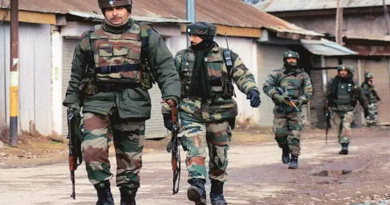Pakistan Denies Targeting Indian Military Bases Amid Night of Blackouts and Sirens

1. Escalation of Hostilities
On the night of May 8, 2025, explosions and missile flashes illuminated the skies over Jammu, India, as Pakistani-origin drones and missiles targeted military stations in Jammu, Pathankot, and Udhampur. The attacks, which lasted approximately two and a half hours, were intercepted by India’s air defense systems, causing no reported casualties or material damage. Electricity in Jammu was temporarily disrupted during the assault.
2. Pakistan’s Denial and Retaliatory Claims
Pakistan denied involvement in the attacks, labeling India’s accusations as “entirely unfounded, politically motivated, and part of a reckless propaganda campaign.” In response, Pakistan claimed to have downed 25 Indian drones and shot down five Indian aircraft, assertions that India has disputed.
3. Civilian Impact and Infrastructure Damage
The conflict has resulted in significant civilian casualties on both sides. In Jammu, explosions and missile flashes led to a temporary power blackout, while artillery fire in Poonch District caused 15 civilian deaths and 43 injuries. In Pakistan, 31 civilians were killed due to Indian missile strikes and artillery shelling.
4. International Calls for De-escalation
Global powers, including the United States, Russia, and China, have urged both countries to de-escalate tensions. U.S. Secretary of State Marco Rubio engaged with leaders from both nations to encourage diplomatic dialogue.
5. Economic Repercussions
The escalating conflict has negatively impacted financial markets in both nations. The Indian rupee weakened by 0.8% to 85.59 per dollar, while the benchmark 10-year bond yield rose by over 7 basis points to 6.3807%. The NSE Nifty 50 and BSE Sensex indices also dropped by 0.5% and 0.4%, respectively. Market experts attribute the downturn to heightened geopolitical tensions.
6. Civil Defense Measures
In preparation for potential escalation, India conducted a nationwide civil defense exercise on May 7, 2025, known as Operation Abhyaas. This drill involved air-raid siren tests, blackout simulations, evacuation drills, and public training sessions across 244 districts, including major cities like Delhi, Mumbai, and Chennai.
Operation Abhyaas: Nationwide Civil Defence Exercise
In response to escalating tensions following the Pahalgam attack on April 22, 2025, India initiated a comprehensive civil defence exercise named Operation Abhyaas on May 7, 2025. This nationwide drill aimed to enhance emergency preparedness across 244 districts, including major cities like Delhi, Mumbai, Chennai, and Hyderabad. Organized by the Ministry of Home Affairs and coordinated by the National Disaster Management Authority (NDMA), the exercise focused on simulating responses to potential hostile scenarios and natural disasters.
Key Activities Conducted
- Air Raid Siren Tests: In Delhi, 60 air raid sirens were activated at 4:00 PM across 55 locations, including Khan Market, Select Citywalk Mall, and Chandni Chowk. These tests aimed to familiarize the public with emergency alerts and ensure timely evacuations.
- Blackout Simulations: A 15-minute scheduled blackout was conducted in Delhi’s NDMC area from 8:00 PM to 8:15 PM, testing the city’s response to power outages during emergencies. The blackout was executed smoothly, with power restored promptly and no major public complaints reported.
- Evacuation Drills: In Hyderabad, mock evacuation drills were carried out between 4:00 PM and 4:30 PM within the Outer Ring Road limits. Key sites such as Secunderabad, Golconda Fort, Kanchan Bagh, and Nacharam served as focal points for these drills. Personnel from the National Disaster Response Force (NDRF), State Disaster Response Force (SDRF), police, fire, rescue, medical, and municipal departments participated in the exercise.
- Public Training Sessions: Across various states, public awareness campaigns were conducted to educate citizens on emergency response procedures, including first aid, fire safety, and shelter management. In Kerala, mock drills were conducted across all 14 districts, with the state government urging public cooperation and preparedness.
Objectives and Outcomes
The primary objective of Operation Abhyaas was to bolster civilian readiness against potential threats, particularly in light of the recent terrorist attack in Pahalgam. The exercise successfully tested the coordination among various agencies and the public’s response to simulated emergencies. It also highlighted areas for improvement in communication, resource mobilization, and public awareness.
The nationwide participation underscored the collective effort required to enhance national security and disaster resilience. While the exercise was conducted smoothly, it also served as a reminder of the importance of continuous training and preparedness in safeguarding communities.
7. Current Situation
Both nations have closed airspace and suspended flights in affected regions. At least 25 airports in northern and western India have been shut down until May 10, 2025, and civil operations at Srinagar Airport have been halted indefinitely. Pakistan has also canceled flights and closed schools and colleges in several provinces. The situation remains tense, with both sides on high alert. International observers continue to monitor developments closely, urging restraint and dialogue to prevent further escalation.






Loved the breakdown! For those diving into AI-driven workflows, the AI Customer Service Assistant from tyy.AI Tools is a must-try for streamlining support and boosting efficiency.